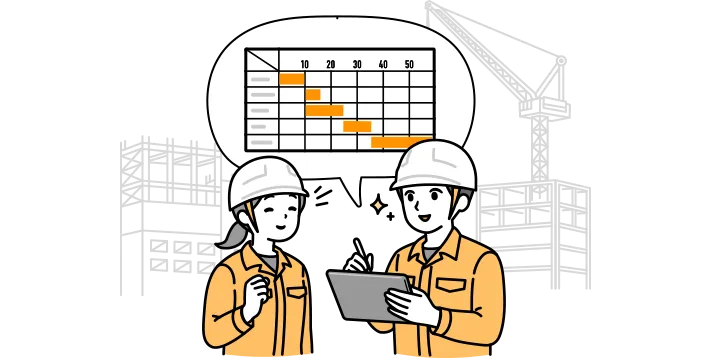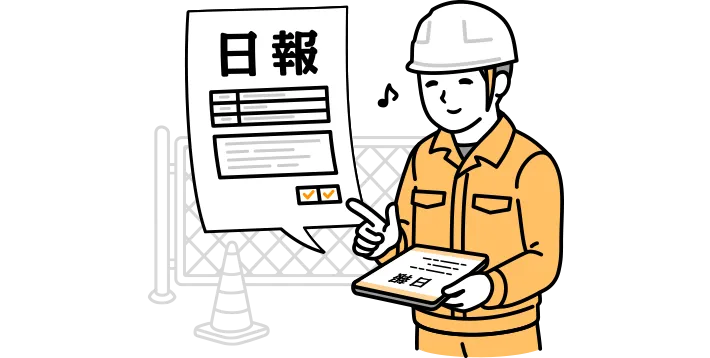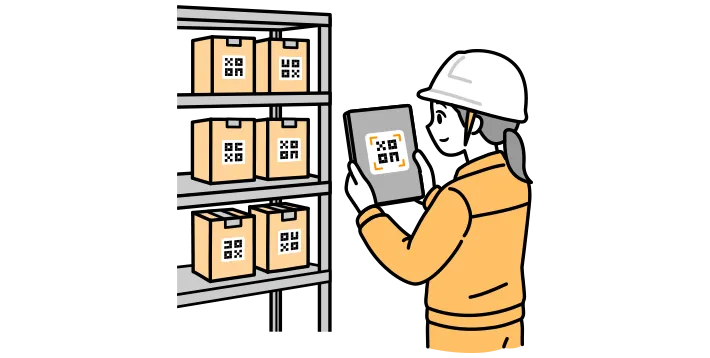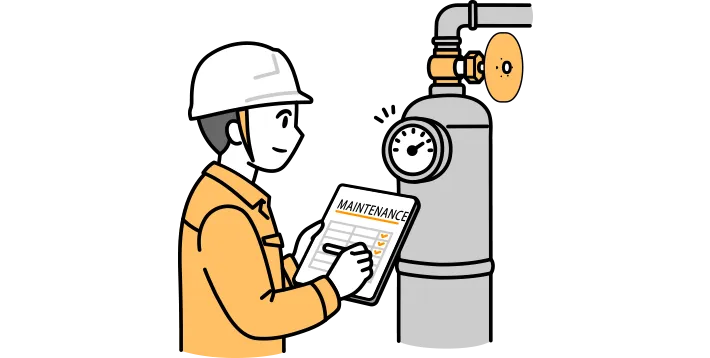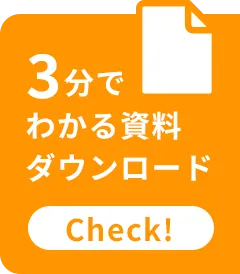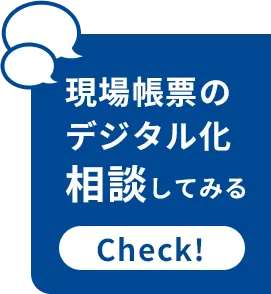
Case study: Asahi Tec Corporation
Asahi Tec Corporation
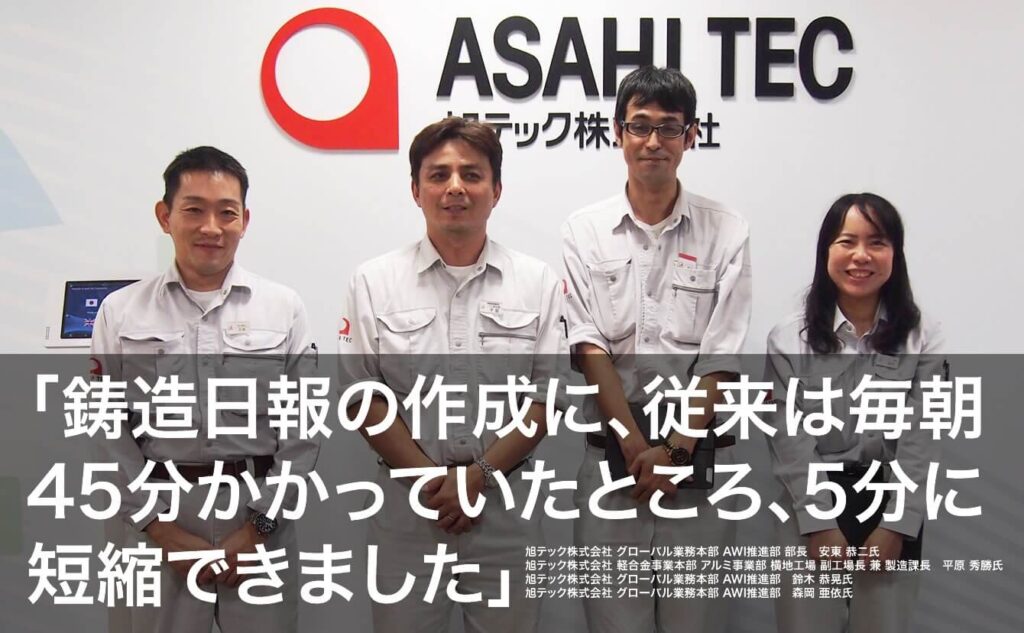
Digitization of daily reports
Kaizen effect
Every morning, workers spent 45 minutes creating a daily casting report.
Creation completed in 5 minutes, significantly reducing work time
Conventional checklists are like "death certificates" in that treatment results are reported after the fact.
We were able to improve the quality of the results into a "health certificate" for the purpose of communicating and sharing the results.
Enter handwritten data from the site into Excel and spend 5-6 hours each week understanding and analyzing the current situation.
The values entered on-site are immediately graphed and fed back to the site promptly.
-

General Manager, AWI Promotion Department, Global Business Headquarters Mr. Kyoji Ando
-

Yokochi Factory Deputy Factory Manager and Manufacturing Section Manager Mr. Hidekatsu Hirahara
-

Global Business Headquarters AWI Promotion Department Ms. Ai Morioka
-

Global Business Headquarters AWI Promotion Department Yasuaki Suzuki
Case study: Digitalization of daily reports and checklists in the mold and casting department | Asahi Tec Corporation
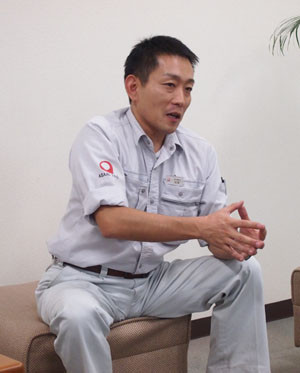
Kyoji Ando, General Manager, AWI Promotion Department, Global Business Division, Asahi Tec Corporation
"We may be using iPads better than anyone else in the Japanese manufacturing industry. We're even confident about that," says Kyoji Ando, General Manager of the AWI Promotion Department at Asahi Tec's Global Business Headquarters. Asahi Tec is a manufacturer of formed parts based on its own aluminum casting and cast iron technologies. The group has five manufacturing plants in Japan, four in Thailand, and two in China, and is expanding its high-quality casting and die-cast products globally.
Using iPad to transform work styles
Asahi Tec has been introducing iPads to its factories and administrative operations since as early as 2010. The impetus for this was the company's work style transformation initiative, "AWI (Asahi Work Style Innovation)," which began in 2010. Mr. Ando recalls that AWI's mission, to design work styles for three years from now by incorporating the latest IT into work, was given to the company through top-down instructions from the president at the time.
"AWI's theme was to move away from operations that relied on experience and intuition and achieve management based on facts and data. With this in mind, we aimed to continue to deliver products stably and with high yields, and we began by transforming the culture at our manufacturing sites, starting with the Yokochi Plant, which handles light alloys such as aluminum and magnesium."
The first thing Asahi Tec did was to review its paper-based equipment inspection sheets and work procedure manuals. The company's factories managed a huge number of documents on paper. However, because of this analog management, it was unclear how many times the procedure manuals were actually viewed, and the reasons for the "OK" or "NG" marks on the inspection sheets could not be determined just by looking at them. Asahi Tec introduced iPads as a tool to overcome these issues with paper-based inspection sheets and procedure manuals and enable everyone to perform the work correctly and without mistakes, regardless of experience or years of service.
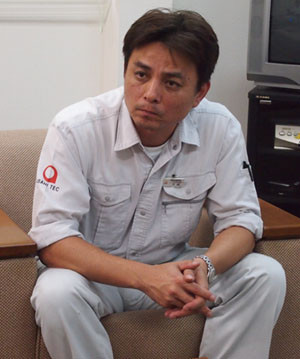
Mr. Hidekatsu Hirahara, Deputy Plant Manager and Manufacturing Section Manager, Yokochi Plant, Aluminum Division, Light Alloy Business Unit, Asahi Tec Corporation
Furthermore, by using business applications, all inspection sheets at the factory were digitized, and instead of checking with "O" or "X," they were changed to numerical inspections. This has made it possible to "visualize" the status of daily operations at the factory, says Hidekatsu Hirahara, deputy factory manager and manufacturing manager at the Yokochi Factory.
"By switching to numerical-based inspections, we were able to visualize various operations at the factory. By checking data trends, we were able to immediately identify changes such as equipment abnormalities, and take preventative action. By using iPads to digitize inspection sheets, we were able to reduce the rate of equipment abnormalities to one-quarter of what it was before," says Hirahara.
Post-implementation follow-up, such as holding regular weekly meetings to discuss the use of iPads and apps, proved effective, and the digitalization of inspection sheets at the Yokochi Plant was fully established in about three months.OEE (Overall Equipment Effectiveness), an indicator of the operating efficiency of production equipment, also steadily improved after the introduction of iPads.
However, it is still difficult to reduce the occurrence of defective products to zero. Therefore, in order to create a system to prevent defective products from being released outside the company, Asahi Tec decided to digitize its work procedure manuals. Using e-book and digital catalog creation software, they created digital manuals for approximately 750 product items. They then created a system that allows users to scan the barcode on the product identification tag to display on an iPad everything from product overviews to inspection procedures, product comparison tables, limit standards, and maps of past problems.
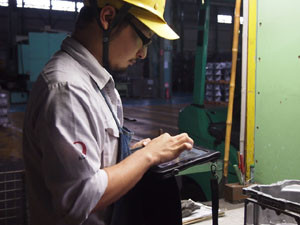
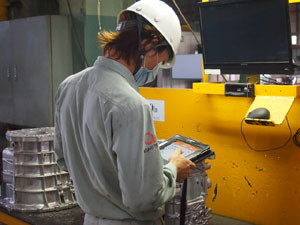
The iPad is used quite naturally on-site.
"With the digital manual, the work procedures, which were previously in black and white, can now be displayed in color. You can also zoom in and out on the iPad by pinching in and out, which helps to increase the efficiency of checking procedures. Another major benefit of the digital manual is that you can always view the latest version," says Ando.
i-Reporter resolves conflicting intentions between management and the field
Using iPads, they were able to digitize equipment inspection sheets and work procedure manuals. However, this alone was not enough to achieve the goal of AWI activities, which was to achieve "management by facts and data." The management department wanted to introduce new systems to grasp facts and analyze data more than ever before. At the same time, the honest feeling on the ground was that they wanted to continue using the systems they were familiar with. As a trump card to reconcile these conflicting desires, Asahi Tec introduced the electronic document solution "ConMas i-Reporter" (hereinafter referred to as i-Reporter) in April of this year.
"We looked at various solutions, including not only iPads but also applications for PCs and Android devices, from the perspective of how to create a system that would make it easy to manage and input data from forms and other important data on-site. i-Reporter was appealing because it is intuitive to use and easy to integrate into work, and it also makes it easy for managers to find the data they need. We also evaluated its track record in the manufacturing industry, and decided to introduce it at the Yokochi Plant," says Ando.
Using i-Reporter, Asahi Tec has established a system in the mold and casting department of the Yokochi Plant that allows paper-based daily reports and checklist formats, which had previously been completed by hand, to be entered entirely on iPads. i-Reporter allows the familiar visuals of paper to be used as is, and has made it possible to digitize daily reports and checklists without changing input rules or items. Since the site was already accustomed to using iPads, it took almost no time for i-Reporter to become established.
"From the perspective of the field, the only change is that instead of handwriting on the paper forms they were previously using, they can now input data on an iPad. However, from the perspective of us managers, it has been a complete 180-degree change in terms of management. Previously, we had to input handwritten data from the field into Excel, spending five to six hours each week ascertaining and analyzing the current situation. We would then issue instructions for the following month based on the results and analysis of the previous month. With i-Reporter, however, we have automated this input process, and can now create graphs with the press of a button. We can also provide feedback to the field the week after the analysis, which has dramatically increased the speed at which we can issue accurate instructions to the field," says Hirahara.
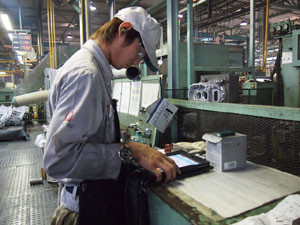
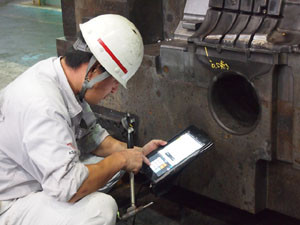
A system has been established to quickly analyze the data entered on-site and provide immediate feedback to the site.
For example, in the department that makes molds, mold maintenance check sheets are used in i-Reporter like a circular to communicate between the maintenance and casting staff. Workers enter each item into i-Reporter, and in some cases attach photos taken on the spot with the iPad camera, sharing information to ensure smooth handover to the next task. Ando says that the mold maintenance check sheets on i-Reporter have enabled them to create a system that allows them to hold meetings to address defects for each product item as they arise.
"Previous checklists were like 'death certificates,' where the results of the measures taken were reported after the fact. By using i-Reporter, we have been able to improve the quality and turn it into a 'health certificate,' with the aim of communicating and sharing the results. Just like the medical records used in hospitals, it is now possible to share information with more depth, such as 'This tendency to lead to trouble was observed, so this measure was taken.'" (Ando)
Furthermore, with the use of i-Reporter, the time required for factory workers to prepare daily casting reports has been reduced from 45 minutes each morning to just 5 minutes, resulting in a significant reduction in work time.
However, Hirahara emphasizes that the intangible effects of introducing i-Reporter are greater than the visible results of improving the efficiency of on-site work and speeding up data analysis in the management department.
"I think i-Reporter also contributes to receiving feedback on the analysis results and increasing understanding on the ground. Rather than simply doing what they're told, they work to solve problems based on a true understanding. This makes a big difference in the results. Furthermore, we can hold regular defect prevention meetings while looking at the data provided by i-Reporter, so I feel that it has also led to an improvement in the quality of meetings and work." (Mr. Hirahara)
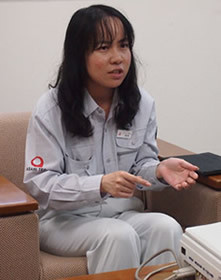
Ai Morioka, AWI Promotion Department, Global Business Headquarters, Asahi Tec Corporation
Furthermore, the data collected by i-Reporter can be quickly shared across the company, which is also a major benefit, as data from the full-scale dimension inspection check sheet can be directly applied to the X-R control chart used for quality control on the production floor. Ai Morioka of the AWI Promotion Department also highly values the ability to output such data in Excel and PDF formats.
"Data entered on-site can be output as a PDF file with a photo from the administrator screen, allowing on-site decisions to be made while looking at it. Furthermore, by saving the data, it is possible to keep a record of past cases. By continuously recording data with i-Reporter, we hope to see not only improvements in daily operations, but also long-term benefits," says Morioka.
i-Reporter is being introduced as a standard tool at factories both in Japan and overseas.
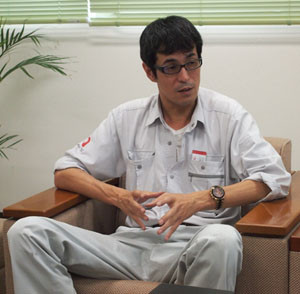
Yasuaki Suzuki, AWI Promotion Department, Global Business Division, Asahi Tec Corporation
Asahi Tec has been actively using iPads in manufacturing since 2010, when iPads were still a novelty. Yasuaki Suzuki of the AWI Promotion Department points out that i-Reporter, which Asahi Tec chose as a business improvement tool, has great potential for the manufacturing industry.
"Until now, decisions were made based on intuition and experience, but now that i-Reporter allows us to use data, I think it's easier to come up with ideas to improve various operations. We also incorporate feedback from management and the field, and make improvements on a daily basis, such as changing the way data is collected to suit i-Reporter in areas where i-Reporter didn't work well with previous paper forms. I think that manufacturing companies have a stronger desire to constantly improve their operations than companies in other industries, and I feel that i-Reporter is a very easy-to-use tool for improvement activities on the manufacturing industry's front lines," says Suzuki.
Asahi Tec has currently only introduced i-Reporter at its Yokochi Factory, but in the future, the company hopes to roll it out as a standard tool at its manufacturing bases both in Japan and overseas.
"We are gradually rolling out i-Reporter to our Toyokawa Plant in Aichi Prefecture, and our Bangpakong Plant in Thailand. The iPad is a global tool used in every country and region of the world, regardless of nationality or language. It is important for a global manufacturer like ours to utilize such tools and create high-quality products around the world using our own standards. We would like to work with i-Reporter to quickly roll out our standards." (Ando)
Please also take a look at the video below, which summarizes the interview.
Thank you for taking the time to share your valuable story with us despite your busy schedule.
Company Profile
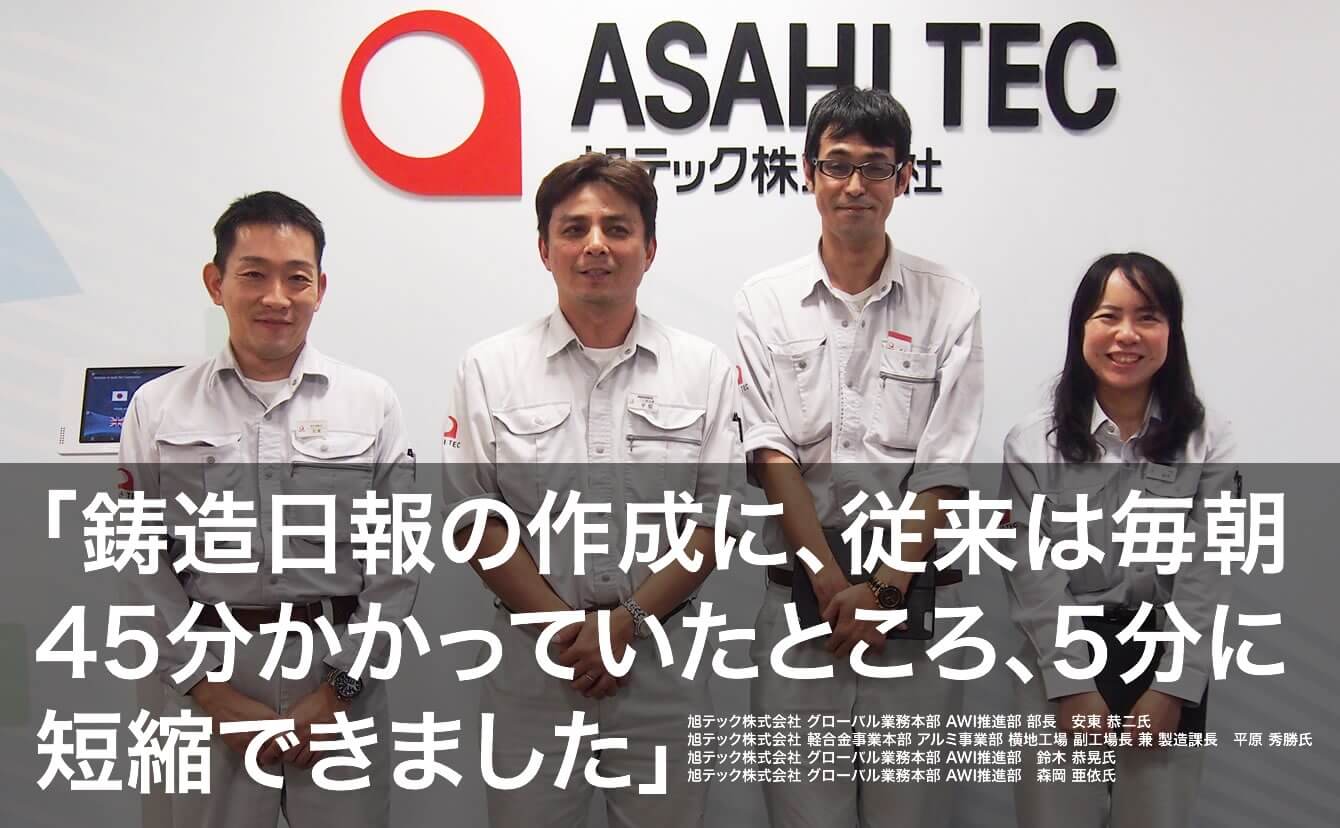
Asahi Tec Corporation
- Established:
- 1988
- Headquarters:
- 34-1 Nakasode, Sodegaura City, Chiba Prefecture, 299-0267
- Business Description:
- Oil refineries, petrochemical plant design, construction, maintenance work, etc.
The above reviews are quoted from ITreview.(https://www.itreview.jp/products/i-reporter/reviews)
※ITreview is a real-name, company-verified review platform featuring authentic feedback from professionals on the front lines.






